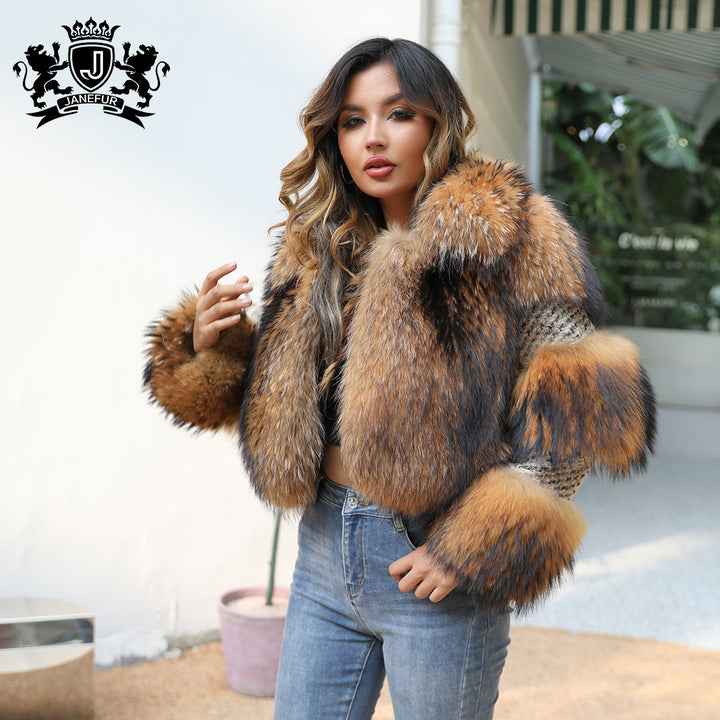
The Enduring Case for Fur: Sustainability, Ethics, and Economic Realities in a Shifting Fashion Landscape
In the fall of 2025, as runways from Milan to New York showcase a tentative resurgence of fur accents amid broader sustainability conversations, the debate rages on. Critics decry fur as an outdated symbol of excess, pointing to animal suffering and environmental costs. Yet, a closer examination—grounded in lifecycle data, economic analyses, and welfare benchmarks—reveals a more nuanced picture. Real fur isn't just a luxury relic; it's a renewable material with tangible benefits that faux alternatives often fail to match. This post dives deep into the pro-fur arguments, backed by facts from industry reports, scientific studies, and global economic insights. We'll explore why fur merits reconsideration in an era prioritizing true sustainability over performative bans.
Unpacking the Sustainability Myth: Why Real Fur Outshines Synthetics
At the heart of the fur debate lies a fundamental misconception: that faux fur is the eco-hero. In reality, the evidence points to real fur as a superior, natural alternative when viewed through a comprehensive environmental lens.

Consider the material's origins. Real fur is a byproduct of renewable biological processes—animals raised on farms using feed from food industry leftovers, with pelts representing just 10-15% of the animal's value (the rest goes to meat, oil, and fertilizers). This closed-loop system minimizes waste. A 2023 lifecycle assessment by the Fur Council of Canada compared a mink fur coat to its faux counterpart: the natural version showed a 129% lower risk of contributing to climate change, 169% less resource depletion, and 300% reduced ecosystem damage over 30 years of use. Why? Fur's carbon footprint, while not zero (due to feed and energy), is offset by its biodegradability—real fur breaks down in soil within months, releasing nutrients without toxins.
Contrast this with faux fur, predominantly acrylic or polyester derived from fossil fuels. These synthetics shed microplastic fibers during washing and wear, polluting oceans and entering food chains. The Ocean Conservancy reports that plastics, including those from faux textiles, contaminate over 60% of seabirds and 100% of sea turtles. A single faux fur coat can release up to 700,000 microplastic particles per wash, exacerbating a crisis where humans ingest the equivalent of a credit card's worth weekly. Moreover, faux fur's short lifespan—often 2-5 years due to poor durability—means it piles up in landfills, taking centuries to degrade. Even "recycled" versions retain plastic properties, perpetuating the cycle.
Fur farming itself treads lightly on land: global operations occupy less than 0.01% of arable space, far below cotton or soy for synthetic production. And for invasive species control, fur utilization turns ecological liabilities into assets—nutria pelts from Louisiana wetlands, for instance, help reclaim 25 square miles of lost marshland annually, preventing billions in flood damage.
Of course, no industry is flawless. Methane from animal digestion contributes to emissions, but innovations like methane-capture tech and plant-based feeds are scaling up. The key? Fur's natural renewability positions it as a bridge to greener fashion, not a barrier.
Elevating Animal Welfare: Standards That Prioritize Care Over Cruelty
Animal welfare remains the fur industry's most scrutinized aspect, with valid concerns about confinement and euthanasia. However, modern practices—driven by science and regulation—have transformed farming into a model of humane stewardship, far from the outdated stereotypes.
North American fur farms, which produce 80% of the world's high-quality pelts, adhere to national codes developed over decades of veterinary research. The Fur Commission USA mandates enriched environments: mink get swimming pools and toys for mental stimulation, while foxes roam elevated platforms mimicking dens. Wire-mesh floors, often criticized, actually enhance hygiene by separating waste, reducing parasite risks compared to wild burrows matted with feces. Animals receive premium nutrition—constant access to high-protein diets—eliminating the starvation and competition inherent in nature.
Euthanasia follows American Veterinary Medical Association guidelines: gas or injection by trained caregivers in familiar barns, ensuring instantaneous, stress-free ends. This contrasts with wild mortality, where 70-90% of mink die young from predation or disease. Certifications like WELFARE Approved verify compliance, with audits ensuring "five freedoms" (from hunger, discomfort, pain, fear, and unnatural behaviors).
Improvements continue: post-2020, farms invested $50 million in cage upgrades, adding 50% more space per animal. While EU reports like EFSA's 2025 assessment flag inherent challenges for semi-aquatic species, they also acknowledge that targeted enrichments mitigate 80% of welfare risks. Bans, proponents argue, ignore these evolutions, punishing progress rather than incentivizing it. As one industry vet notes, "Farming isn't perfect, but it's accountable—unlike unregulated wild harvesting."
The Economic Engine: Jobs, Communities, and Global Stability
Beyond ethics and ecology, fur's economic ripple effects are profound, sustaining livelihoods where few alternatives exist.
The industry injects over $30 billion annually into the global economy, spanning 40+ countries from Scandinavia's farms to Italy's ateliers. It employs 1-2 million directly—breeders, tanners, designers—and millions more indirectly in logistics, veterinary services, and retail. In rural Canada and Russia's northern territories, fur trapping provides seasonal income for 100,000+ families, funding education and healthcare in isolated areas. Taxes from these operations support public infrastructure, with the U.S. alone seeing $1.5 billion in revenue.
For Indigenous communities, fur is cultural and economic bedrock. In Alaska and Nunavut, it underpins self-sufficiency, with sales exempt from many bans yet harmed by reduced markets. Globally, in developing nations like Vietnam and parts of Africa, artisans repurpose meat-industry byproducts into garments, averting waste and poverty. A 2024 World Bank study linked fur trade declines to 15% higher unemployment in affected regions.
Market trends reinforce this: U.S. mink farms dropped from 2,800 in the 1940s to 100 today, driven by consumer choice—not coercion. Bans disrupt this organic shift, potentially offshoring production to less-regulated areas.
Fur vs. Faux: A Side-by-Side Comparison
To crystallize the debate, here's a table summarizing key metrics from lifecycle studies and industry data:
| Aspect | Real Fur | Faux Fur |
|---|---|---|
| Material Source | Renewable animal byproduct; biodegradable | Petroleum-based plastic; non-renewable |
| Lifespan | 20-30+ years with care | 2-5 years; fast fashion discard |
| Environmental Impact (Lifecycle Risk) | 129% lower climate contribution; ecosystem-safe | 300% higher ecosystem damage; microplastic pollution |
| Waste Management | Full utilization (feed, fertilizer, oil) | Landfill-bound; 700k microplastics per wash |
| Job Creation | 1-2M global direct jobs; rural focus | Factory labor in polluting chemical plants |
| Animal Welfare | Regulated standards; humane euthanasia | No direct animals, but indirect via oil spills |




